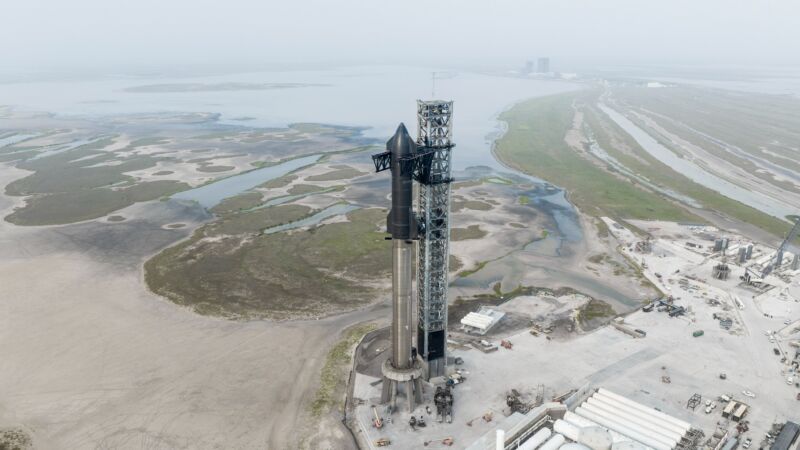
SpaceX
This weekend SpaceX engineers completed a final “flight readiness review” for the massive Super Heavy and Starship launch system, declaring the vehicle ready to make its debut test flight. SpaceX founder Elon Musk announced the decision early Sunday morning on Twitter, saying the vehicle was only “awaiting regulatory approval” before launching.
Presently, the company is targeting April 17, at 7 am local time in South Texas (12:00 UTC) for the integrated flight test of the launch system. It should be quite a show—the combination of the Super Heavy first stage and Starship upper stage is the largest and most powerful rocket ever built.
Sources said SpaceX has been working closely with the Federal Aviation Administration to provide the necessary data about Starship’s performance and its impacts to the area surrounding the launch site. There is an expectation that a launch license will be issued this week, but there is no guarantee this will happen.
SpaceX also plans one final test, a “launch rehearsal,” on Tuesday. During this test the rocket’s first and second stages will be fueled as if they were going to launch, but the rocket’s engines will not ignite. This test will increase the company’s confidence in its ability to fuel the Starship launch system and ready it for liftoff on the day of the actual launch.
If SpaceX does target Monday, April 17, for liftoff from its Starbase facility in South Texas, the early indications are that launch site weather will be fair. At present there appears to be only very low rain chances and moderate surface-level winds.
During this flight test, if it proceeds nominally, the Super Heavy rocket will fire for a couple of minutes before separating from the upper stage and making a controlled descent into the Gulf of Mexico. Like SpaceX did with some of its early Falcon 9 rocket first stages, the company will monitor the vehicle’s performance to see if they are ready to attempt a land-based landing on future missions.
After separating from the Super Heavy rocket, the Starship upper stage will seek to reach orbital velocity before reentering the atmosphere over the Pacific Ocean. SpaceX plans to land Starship vertically, into the ocean, north of the Hawaiian islands.
This test flight will carry no payloads—indeed the sole purpose is to test the rockets, their engines, and the capability of the vehicles to reenter Earth’s atmosphere and make a controlled landing. SpaceX engineers have a million questions for which they seek data. Can the tall rocket clear the launch tower? Will enough of the vehicle’s 33 main engines fire long enough to put Starship into its planned trajectory? Will Starship’s engines ignite? Can the vehicle survive the harsh conditions of reentry? How intact will everything be once it reaches the ocean?
Soon, perhaps very soon, we may have some answers.









